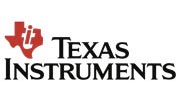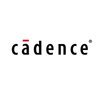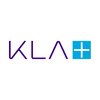Filter interviews by
Texas Instruments Interview Questions and Answers
137 Interview questions
Various types of oscillators include RC, LC, crystal, relaxation, and voltage-controlled oscillators.
RC oscillator uses a resistor and capacitor to create a time-varying signal
LC oscillator uses an inductor and capacitor to create a resonant circuit
Crystal oscillator uses a quartz crystal to create a stable frequency signal
Relaxation oscillator uses a nonlinear element like a transistor to create a periodic wavefo...
Diode terminals refer to the two conductive ends of a diode, known as the anode and cathode, which control current flow.
The anode is the positive terminal where current enters the diode.
The cathode is the negative terminal where current exits the diode.
Diodes allow current to flow in one direction (from anode to cathode) and block it in the opposite direction.
Example: In a standard silicon diode, the anode is mark...
Voltage transfer functions of inverters describe how input voltage is transformed into output voltage.
Voltage transfer functions show the relationship between input and output voltages of an inverter.
They are typically represented in the frequency domain as a function of frequency.
Inverters can have different transfer functions based on their design and control strategy.
Examples include voltage-source inverters an...
R L C circuits are electrical circuits that contain resistors, inductors, and capacitors in various configurations.
RLC circuits can be series, parallel, or a combination of both.
In series RLC circuits, the components are connected in a line along the same current path.
In parallel RLC circuits, the components are connected across the same voltage source.
Examples include band-pass filters, low-pass filters, and reso...
Setup time is the minimum time required for the input signal to be stable before the clock edge, while hold time is the minimum time the input signal must be held stable after the clock edge.
Setup time ensures that the input signal has settled before the clock edge to avoid timing violations.
Hold time ensures that the input signal remains stable after the clock edge to prevent data corruption.
Examples: In a flip-f...
Charge sharing among capacitors refers to the redistribution of charge between capacitors when they are connected in parallel.
Charge sharing occurs when capacitors are connected in parallel and have different initial voltages.
The capacitors will redistribute charge until their voltages are equalized.
This phenomenon can impact circuit performance and should be considered during analog layout design.
Example: In a sa...
In a series combination of resistors, the total resistance is the sum of individual resistances.
Total resistance is calculated by adding the individual resistances in the series.
Current remains the same throughout the series combination.
Voltage is divided among the resistors based on their individual resistances.
CMOS inverter is a fundamental building block in digital integrated circuits, with characteristics like high input impedance, low output impedance, and high gain.
CMOS inverter consists of a PMOS and NMOS transistor connected in series.
It has high input impedance due to the PMOS transistor and low output impedance due to the NMOS transistor.
The voltage transfer characteristic of a CMOS inverter is typically nonline...
Biasing of a diode refers to applying a DC voltage across the diode to control its voltage and current characteristics.
Biasing a diode involves applying a DC voltage across it in order to control its operation.
Forward biasing occurs when the positive terminal of the voltage source is connected to the anode of the diode.
Reverse biasing occurs when the negative terminal of the voltage source is connected to the anod...
Different types of memory units include RAM, ROM, cache memory, virtual memory, and flash memory.
RAM (Random Access Memory) - volatile memory used for temporary storage
ROM (Read-Only Memory) - non-volatile memory used for permanent storage
Cache Memory - high-speed memory used to store frequently accessed data
Virtual Memory - uses disk space as an extension of RAM
Flash Memory - non-volatile memory used in USB drive...
Texas Instruments Interview Experiences
126 interviews found
I applied via Campus Placement and was interviewed in Aug 2024. There were 2 interview rounds.
60 mins test which comprises of 2 sections, Technical and aptitude. Both sections have a time limit of 30 mins. The technical questions were easy to medium and i could finish it in time but i needed more time for finishing the aptitude, a total 40 questions.
(5 Questions)
- Q1. Tell me about yourself
- Ans.
I am a recent graduate with a degree in Computer Science and a passion for coding and problem-solving.
Recent graduate with a degree in Computer Science
Passionate about coding and problem-solving
Experience with programming languages like Java, Python, and C++
Completed internships at tech companies such as Google and Microsoft
- Q2. Find the voltage through the resistor
- Ans.
To find the voltage through a resistor, use Ohm's Law: V = I * R
Use Ohm's Law: V = I * R, where V is the voltage, I is the current flowing through the resistor, and R is the resistance of the resistor
If the current flowing through the resistor is 2A and the resistance is 5 ohms, the voltage would be V = 2 * 5 = 10V
Make sure to use the correct units for current (Amps) and resistance (Ohms) to get the voltage in Volts
- Q3. The interviewer just kept on adding an extra resistor in parallel and in series to the resistor and asked me to find the voltage
- Ans.
Understanding voltage in circuits with resistors in series and parallel configurations.
In series, total resistance (R_total) = R1 + R2 + ... + Rn. Example: R1=2Ω, R2=3Ω, R_total=5Ω.
In parallel, total resistance (R_total) = 1 / (1/R1 + 1/R2 + ... + 1/Rn). Example: R1=2Ω, R2=3Ω, R_total=1.2Ω.
Voltage across resistors in series is divided: V_total = V1 + V2 + ... + Vn.
Voltage across resistors in parallel is the same: V_tot...
- Q4. He then asked a question on transient analysis ie 2 capacitors connected in series with a switch which closes at t>0 with the voltage across the 2 capacitors being 3 v and asked to find the total voltge
- Ans.
Transient analysis of capacitors in series with a switch closing at t>0 and initial voltage of 3V.
Capacitors in series share the same charge but have different voltages across them.
The total voltage across capacitors in series is the sum of individual voltages.
If two capacitors, C1 and C2, are in series, V_total = V1 + V2.
For example, if C1 has 2V and C2 has 1V, then V_total = 2V + 1V = 3V.
When the switch closes at ...
- Q5. Explain the working of a capacitor and resistor and relation between resistance and length , area
- Ans.
Capacitors store electrical energy while resistors limit the flow of current. Resistance is directly proportional to length and inversely proportional to area.
Capacitors store electrical energy by creating an electric field between two conductive plates separated by an insulating material
Resistors limit the flow of current in a circuit by dissipating energy in the form of heat
The resistance of a resistor is directly pr...
Interview Preparation Tips
- AEC
- Network analysis
- Control System
I applied via Campus Placement and was interviewed in Sep 2024. There were 2 interview rounds.
Basic aptitude and mcqs on analog and digital electronics
(6 Questions)
- Q1. Introduce yourself ( 2 minutes)
- Ans.
I am a dedicated Analog Layout Engineer with a strong background in designing and implementing analog circuits.
I have a Bachelor's degree in Electrical Engineering from XYZ University.
I have 5 years of experience working in the semiconductor industry, specifically focusing on analog layout design.
I am proficient in using CAD tools such as Cadence Virtuoso for layout design.
I have a strong understanding of analog circui...
- Q2. Why are semiconductors used in electronics?
- Ans.
Semiconductors are used in electronics because of their ability to conduct electricity under certain conditions, making them essential for creating electronic devices.
Semiconductors can be used to control the flow of electricity, allowing for the creation of transistors, diodes, and integrated circuits.
They have properties that fall between conductors and insulators, making them versatile for various electronic applica...
- Q3. What is a diode and how does it work?
- Ans.
A diode is a semiconductor device that allows current to flow in one direction only.
A diode has two terminals - an anode and a cathode.
It works by allowing current to flow from the anode to the cathode when a forward voltage is applied.
When a reverse voltage is applied, the diode blocks the current flow.
Diodes are commonly used in rectifiers, voltage regulators, and signal demodulation.
Examples of diodes include silico...
- Q4. Biasing of a diode and it's voltage and current characteristics.
- Ans.
Biasing of a diode refers to applying a DC voltage across the diode to control its voltage and current characteristics.
Biasing a diode involves applying a DC voltage across it in order to control its operation.
Forward biasing occurs when the positive terminal of the voltage source is connected to the anode of the diode.
Reverse biasing occurs when the negative terminal of the voltage source is connected to the anode of ...
- Q5. Fabrication process of a mosfet
- Ans.
The fabrication process of a MOSFET involves creating the various layers and structures that make up the transistor.
Start with a silicon wafer as the base material
Create the gate oxide layer on top of the wafer
Deposit polysilicon to form the gate electrode
Implant dopants to create the source and drain regions
Add metal layers for interconnects
Perform various lithography and etching steps to define the transistor's featu...
- Q6. Working and different regions of operations of the mosfet.
- Ans.
MOSFET operates in different regions: cutoff, triode, saturation. Each region has specific characteristics.
Cutoff region: MOSFET is off, no current flows
Triode region: MOSFET acts as a resistor, linear relationship between Vgs and Id
Saturation region: MOSFET acts as a current source, Vds is small and Id is relatively constant
Interview Preparation Tips
I applied via Campus Placement and was interviewed in Aug 2024. There were 2 interview rounds.
Basic verbal, aptitude questions, Calculate resistance value, multiplexer.
(5 Questions)
- Q1. Resistor ideal short concepts, give 2-5 circuits and ask the difference between those ideal short, nodal analysis
- Q2. Capacitor, capacitance 12th formula, graph, charging discharging, directly or inversly proportional to area, distance between plates.
- Q3. Diode, P-N junction formation, graph, role of threshold, formula.
- Q4. Active region of Transistors, characteristics, graph, Cmos circuit basic concepts on inverter
- Q5. Based on your Project and HR questions
Interview Preparation Tips
Study 12th/PU semiconductor, Capacitor, Resistor parts, Explain Project properly, Communicate and give relavent answer or say I'm not sure right now... Be confident, All the Best!!..
I applied via Campus Placement and was interviewed in Aug 2024. There were 4 interview rounds.
(1 Question)
- Q1. 1st test we have 65 questions focusing on only Opamps
(3 Questions)
- Q1. We have mixed questions 40 in this test
- Q2. 20 from technical
- Q3. 20 from aptitude
(1 Question)
- Q1. Asked few questions on network theory based circuits
(2 Questions)
- Q1. About the college experience
- Q2. About family and basic HR questions
I applied via Campus Placement and was interviewed in Jul 2024. There were 2 interview rounds.
Mostly questions are on number system,probabilty and PC and from verbal reasoning
(5 Questions)
- Q1. Design 3 input xor gate using 2:1 muxes
- Ans.
Use 2:1 muxes to create a 3 input XOR gate.
Connect two of the inputs to the select lines of the muxes.
Connect the third input to the data input of one of the muxes.
Connect the outputs of the two muxes to the inputs of a third mux to get the XOR output.
- Q2. Frequency divider circuits
- Q3. Differnce between blocking and non blocking assignmenst
- Ans.
Blocking assignments wait for the assigned value to be calculated before moving on, while non-blocking assignments allow for concurrent execution.
Blocking assignments use '=' operator and execute sequentially
Non-blocking assignments use '<=' operator and allow for concurrent execution
Blocking assignments can cause race conditions if not used carefully
Non-blocking assignments are commonly used in Verilog for modeling ha...
- Q4. 3 input xnor gate truth table
- Ans.
A 3-input XNOR gate truth table shows the output based on the inputs being equal or not.
XNOR gate output is 1 when all inputs are equal, and 0 when inputs are not equal
The truth table for a 3-input XNOR gate will have 8 rows (2^3) to cover all input combinations
Example: Input A=0, B=1, C=0 will result in output 0
- Q5. Difference between 8051 and arm microprocessor
- Ans.
8051 is an 8-bit microcontroller while ARM is a 32-bit microprocessor with higher performance and more advanced features.
8051 is an 8-bit microcontroller, while ARM is a 32-bit microprocessor.
ARM processors generally have higher performance and more advanced features compared to 8051.
ARM processors are commonly used in mobile devices, embedded systems, and IoT applications, while 8051 is more commonly used in simple em...
Skills evaluated in this interview
Basic questions in electroics, digital and analog
(2 Questions)
- Q1. Basic to tough questions on opamp
- Q2. Basic to tough RC circuit questions
(5 Questions)
- Q1. Full form of PN Junction DIode.
- Ans.
PN Junction Diode stands for Positive-Negative Junction Diode.
PN Junction Diode is a semiconductor device formed by joining a P-type semiconductor with an N-type semiconductor.
It allows current to flow in one direction only, from the P-type region to the N-type region.
Commonly used in rectifiers, voltage regulators, and signal demodulation.
Example: 1N4148 is a popular PN Junction Diode.
- Q2. Full form of DV
- Ans.
DV stands for Digital Video.
DV is a format used for recording and playing back digital video.
It is commonly used in camcorders and digital cameras.
DV files have a .dv file extension.
DV video has a resolution of 720x480 pixels for standard definition or 720x576 pixels for PAL systems.
- Q3. What is tdl in memory testing
- Ans.
TDL stands for Test Data Load in memory testing, used to load test data into memory for testing purposes.
TDL is a process in memory testing where test data is loaded into memory to simulate real-world usage scenarios.
It helps in identifying memory leaks, performance issues, and other memory-related problems.
Examples of TDL tools include MemTest86, RAMMon, and MemTest.
- Q4. What is diffrence between xor and elastic codec
- Ans.
XOR is a logical operation that outputs true only when inputs differ, while elastic codec is a compression algorithm used in video streaming.
XOR is a logical operation that outputs true only when inputs differ
Elastic codec is a compression algorithm used in video streaming
XOR is commonly used in cryptography for encryption purposes
Elastic codec helps in reducing the size of video files for efficient streaming
- Q5. Select following with least elastic coeeficiant
Skills evaluated in this interview
Easy if you managae time well otherwise time will be not sufficient
(2 Questions)
- Q1. Introduction about myself
- Ans.
I am an Analog Design Engineer with a passion for innovative circuit design and a strong background in signal processing and electronics.
Educational background in Electrical Engineering with a focus on analog circuits.
Experience in designing low-noise amplifiers for audio applications.
Proficient in using simulation tools like SPICE for circuit analysis.
Worked on a project involving RF circuit design for wireless commun...
- Q2. Technical questions on basics
I applied via Campus Placement and was interviewed in Aug 2024. There were 2 interview rounds.
Its basically a test comprising 32 mcq
12- logical reasoning
20- core C,DBMS, OS , Computer Networks
2 coding Questions
(2 Questions)
- Q1. He just Gave me to design a React Page and removed all the starting code and gave me blank folder and asked to code all by myself
- Q2. He asked me SQL queries which was quite tough as its of nested queries
In the OA there were 200 MCQ questions
(2 Questions)
- Q1. Communication System based
- Q2. How to understand the customer requirements (Sales related)
Top trending discussions






Texas Instruments Interview FAQs
Some of the top questions asked at the Texas Instruments interview -
The duration of Texas Instruments interview process can vary, but typically it takes about less than 2 weeks to complete.
Tell us how to improve this page.
Texas Instruments Interviews By Designations
- Texas Instruments Analog Design Engineer Interview Questions
- Texas Instruments Analog Layout Engineer Interview Questions
- Texas Instruments Analog Engineer Interview Questions
- Texas Instruments Intern Interview Questions
- Texas Instruments Digital Design Engineer Interview Questions
- Texas Instruments Design Engineer Interview Questions
- Texas Instruments Embedded Software Engineer Interview Questions
- Texas Instruments Digital Engineer Interview Questions
- Show more
Interview Questions for Popular Designations
- Analog Design Engineer Interview Questions
- Analog Layout Engineer Interview Questions
- Intern Interview Questions
- Digital Design Engineer Interview Questions
- Analog Engineer Interview Questions
- Design Engineer Interview Questions
- Embedded Software Engineer Interview Questions
- Senior Associate Interview Questions
- Show more
Overall Interview Experience Rating
based on 71 interview experiences
Difficulty level
Duration
Interview Questions from Similar Companies
Texas Instruments Reviews and Ratings
based on 200 reviews
Rating in categories
|
Analog Design Engineer
125
salaries
| ₹21.9 L/yr - ₹39 L/yr |
|
Software Engineer
76
salaries
| ₹18 L/yr - ₹32 L/yr |
|
Senior NPD Engineer
67
salaries
| ₹20.4 L/yr - ₹25.8 L/yr |
|
Digital Design Engineer
53
salaries
| ₹19.5 L/yr - ₹33 L/yr |
|
Design Engineer
46
salaries
| ₹12.8 L/yr - ₹26.5 L/yr |

Qualcomm

Intel

Molex

TDK India Private Limited
- Home >
- Interviews >
- Texas Instruments Interview Questions














